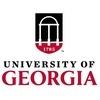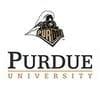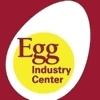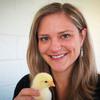Explore all the information on
Poultry welfare
Proper animal welfare involves providing the proper housing, management, nutrition, disease prevention and treatment, responsible care, humane handling and, when necessary, humane euthanasia. These factors allow for the most optimal and humane growing environment. The concept of animal welfare includes three elements: the bird’s normal biological functioning, its emotional state and its ability to express its natural behaviors. Improving animal welfare can be accomplished through offerings like poultry feed enrichment, which can reduce stress, thereby increasing performance, productivity and profitability. Animal welfare is currently a major requirement for intensive poultry production. Beak trimming, stocking density, free access to feed, heat stress, and air pollutants became important issues, which are regulated in several countries. Animal welfare is observed by watching how birds naturally behave and even by looking at mortality stemming from aggressive behaviors.
With the temperatures rising in most regions, concern for heat stress events in Poultry barns is also on the rise. Heat stress can have a negative impact on several aspects of a chicken’s well-being; one consequence that can significantly impact poultry production and profitability is feed efficiency. With chickens starting to feel the physical impact of heat stress as early as April and May in some regions, solutions are needed to assist their physiological defenses. Nutritional...
Comments : 0
Recommendations: 0
The house has been preheated for 36 hours to 92°F. The chicks will be arriving in a few hours and the controller’s six temperature sensors (positioned one foot above the floor) indicate the air temperature is between 91 and 92°F (Figure 2). A thermal image indicates the floor temperature is between 87 and 102°F...
Comments : 0
Recommendations: 6
Introduction Animal welfare has been increasingly included in business agreements and with humane slaughter is a key area of interest (von Keyserlingk and Hötzel, 2015). Retailers, restaurants, and food service companies seek kinder and more responsible farm animal practices (Grandin, 2010; Bayvel et al., 2012). Yet, it is a consensus that changes in attitudes and practices of stakeholders are required to improve farm animal welfare at slaughter (Paranhos da Costa et al.,...
Comments : 0
Recommendations: 0
Recently a study was conducted on commercial broiler farms examining broiler water usage over the first seven days of a growout. High-accuracy, ultrasonic water meters were installed in twenty-two broiler houses (18, 40' X 500' houses, four 54' X 500' houses) on nine farms. The water meters were capable of accurately measuring water...
Comments : 0
Recommendations: 1
Introduction ‘Poultry’ collectively refers to domesticated birds, especially those valued for their meat and eggs, such as chickens, turkeys, ducks, geese and guinea fowl. Of all avian breeds, chicken breeds make up the vast majority of 63%, followed by ducks at 11%, geese at 9% and turkeys 5%, but indigenous or heritage breeds make up most of the world’s poultry genetic diversity (Pym, 2013). Over the past 50 years, the poultry sector has expanded,...
Comments : 0
Recommendations: 0
Why do we, for the most part, give our chicks 24 hours of light during brooding? Do chicks actually benefit from being able to eat and drink at 2 am? Though it is widely believed that 24 hours of light is essential to maximizing chick performance and health, preliminary trails have found no significant benefit in doing so. Numerous...
Comments : 26
Recommendations: 7
I. INTRODUCTION The recognition in the late 1960’s that excessive growth rates in broiler breeders were negatively impacting rate of lay and increasing production of unsettable eggs (Jaap and Muir, 1968) has been one of the most transformative events in the history of the hatching egg industry. The resultant feed restriction programs during rearing resolved the issue at the time. But continued genetic progress resulted in feed restriction being necessary throughout...
Comments : 0
Recommendations: 0
I. INTRODUCTION The transition in the layer industry from conventional cages to cage-free and even further into free-range production is rewriting the nutritional requirements of the laying hen. In the last 25 years, the number of eggs a hen can produce has increased by about 2 eggs each year while the amount of feed required to produce these eggs has been reduced by 18.6% in cages (Anderson, 1991; Anderson et al., 2013, Anderson, 2019). The result has been a high value...
Comments : 0
Recommendations: 0


Effect of <i>Cordyceps militaris </i> Hot Water Extract on Immunomodulation-associated Gene Expression in Broilers, Gallus gallus (Extract)
Suggested link
INTRODUCTION According to data from the Brazilian Animal Protein Association (ABPA, 2018), in 2017 the Brazil occupied the 2nd place in the world poultry meat production, behind only the United States of America. However, Brazil remains in first place in world exports, destining more than 30% of chicken meat production to exportation. Following the legal recommendations of the Ministry of Agriculture, Livestock, and Supply, through the supervision of the Federal Inspection...
Comments : 1
Recommendations: 2
INTRODUCTION Birds may be exposed to a variety of potential stressors during preslaughter. The adverse effects of these factors and their combinations may range from mild discomfort to death (Petracci et al., 2006). One such factor is feed withdrawal prior to transport to the slaughterhouse (Petracci et al., 2010). Feed is withdrawn from poultry prior to slaughter to reduce the potential of carcass contamination with crop and intestinal contents (Bilgili, 2002). However, when...
Comments : 0
Recommendations: 1
This newsletter provides an overview of potential flock predators, how to identify the predator, and approaches to avoid predation in your free-range poultry flock. Predation is a common risk for poultry that are allowed to roam freely outdoors. Predator types may differ depending on the region. Therefore, this newsletter may not cover all...
Comments : 1
Recommendations: 0
Introduction Several factors can influence animal production, which can be beneficial or harmful to each species. In addition to the ambience, nutrition and sanity, the genetic characteristics of the breeds/lineages also cause changes in the adaptation and performance of the animals (Azevedo, Fosse Filho, Pereira, Andrade, & Júnior, 2016). In the current market there are three genetic groups of poultry according to their ability to produce: heavy poultry, light laying...
Comments : 0
Recommendations: 0
...
Comments : 0
Recommendations: 1
INTRODUCTION Brazilian poultry industry is highly relevant for the country economy. In 2016 a total of 13 million tons of broiler meat was produced, and nearly 35% was exported. (ABPA, 2017). Broiler production is carried out in several variations of house design. However, most of the production in the integrated system is done in open-sided houses with lateral polypropylene curtains, and with solar orientation East-West. The inside cooling is a combination of natural and forced...
Comments : 0
Recommendations: 0
INTRODUCTION Housing systems and mating strategies have become a global focus of concern as these are being referred one of the most cogent factors in overall performance of broiler parent stock (PS) in progressive poultry (Whitehead et al., 2016). Hence, now a days, the scientists are striving to probe the exact impact of keeping place of birds on their productive and reproductive performance. Despite of many advantages and disadvantages, two housing systems i.e., floor and...
Comments : 0
Recommendations: 0
INTRODUCTION Substantial consumer pressure demonstrates that some practices adopted by the poultry industry should be revised as soon as possible, particularly those related to the management of debeaking methods. Pecking committed by dominant bird causes prolonged stress, decreased feed intake and worsening feed conversion, and may even affect internal and external egg quality (Vieira Filho, et al., 2016). Also, whole beak pullets waste and select feed grains, compromising...
Comments : 0
Recommendations: 0
High pressure sodium (HPS) lights have been used in broiler-breeder houses for decades due to their very high lumen output. The typical 150-watt HPS fixture produces approximately 16,000 lumens of light which is 16 times the amount of light produced by a 75-watt incandescent light bulb. The downside of HPS lighting systems is that in order to...
Comments : 0
Recommendations: 0
Dust found in poultry housing is a complex substance most likely comprised of a mixture of excreta, feather, feed and bedding material. Exposure to poultry dust can impair the health of both poultry and poultry farmworkers as it serves as a medium for survival and spread of pathogenic microorganisms and inhalation of respirable particles and toxins (Just et al. 2009; Viegas et al. 2013). It has also proven useful as a population level sample material for tracking pathogen incidence and...
Comments : 0
Recommendations: 0
Rick van Emous, Ph.D., Senior Researcher in Animal Nutrition at Wageningen Livestock Research (Netherlands), shares some recommendations to reduce the negative effects of feed restriction on bird behaviour and welfare...
Comments : 0
Recommendations: 0
One way to improve efficiency is to optimize the nutrition and management of the breeder hen by optimizing its reproduction and the performance of the progeny. Hear what Mercedes Vázquez-Añón, Ph.D., Senior Director of Strategic Initiatives and Account Collaboration at Novus International, has to say about it...
Comments : 0
Recommendations: 3





.jpg&w=3840&q=75)


.jpg&w=3840&q=75)























